There’s a new Humble Bundle with MIT Press Video Game Books, featuring three of my books, many books from our Playful Thinking series, and from Platform Studies.
https://www.humblebundle.com/books/inside-gaming-mit-press-books 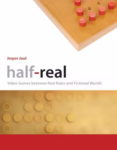
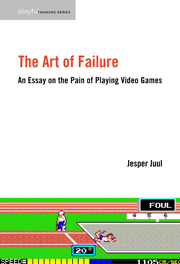
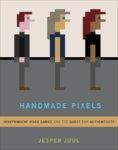
My name is Jesper Juul, and I am a Ludologist [researcher of the design, meaning, culture, and politics of games]. This is my blog on game research and other important things.
There’s a new Humble Bundle with MIT Press Video Game Books, featuring three of my books, many books from our Playful Thinking series, and from Platform Studies.
https://www.humblebundle.com/books/inside-gaming-mit-press-books 


I have a new paper out, just presented at the CHI Play’21 conference:
“The Game of Video Game Objects: A Minimal Theory of When We See Pixels as Objects Rather than Pictures.” In Extended Abstracts of the 2021 Annual Symposium on Computer-Human Interaction in Play. CHI PLAY ’21. https://www.jesperjuul.net/text/gameofobjects/
 We’ve discussed immersion (for and against), but I argue that we’ve overlooked a much more fundamental question: Why and when do we think of pixels on the screen as objects, rather than as pictures of objects?
We’ve discussed immersion (for and against), but I argue that we’ve overlooked a much more fundamental question: Why and when do we think of pixels on the screen as objects, rather than as pictures of objects?
During the pandemic, I built a game for exploring this question and wrote an accompanying essay. This extends my previous paper Virtual Reality: Fictional all the Way Down (and that’s OK).
The game presents a series of game objects, and asks the player to consider their status:
The conclusion is not just that games and VR are cultural forms (obviously), but that we judge game objects based on what we are trying to use them for, and game worlds are always designed for particular kinds of uses. And we know this. There thus can be no universal metaverse, only different worlds built for different purposes.
From the abstract:
“While looking to the future, we have overlooked what is right before us. With new technology, haptics, rendering, virtual reality, we have spent much energy discussing immersion and presence, thinking sometimes about current technology, but often about a hypothetical perfect experience or future perfect technology.
In this, we have forgotten something rather fundamental: How do we in the first place decide to see a group of pixels on a screen as an object to which we have access, rather than as a picture of an object? This paper explores this question through a playable essay. At first, we may think that we will identify anything interactive as an object, but the playable essay demonstrates that this is much more complex and pragmatic, and that this identification has three steps – identifying pixels as an object rather than a picture, reasoning about the object as a specific type of object (such as a ball), and identifying it as a real instance of a type of object (such as a calculator).”
Thanks to IVD at The Royal Danish Academy, Nick Montfort, Stefano Gualeni, Pawel Grabarczyk, Dooley Murphy, and Jan-Noël Thon for comments; to Andrés Cabrero Rodríguez-Estecha for visual design; Stephane Bersot for the calculator asset. The project was made with Unity3D and Low Poly Game Kit by JayAnAm.
 I was waiting for the pandemic to blow over before thinking about time management again, but it looks like there will be no simple global endpoint, so here goes. I hope this is useful for other potential writers.
I was waiting for the pandemic to blow over before thinking about time management again, but it looks like there will be no simple global endpoint, so here goes. I hope this is useful for other potential writers.
How long does it take to write a book? I must confess I had no idea, but writing Handmade Pixels took me 1000 hours over the course of 4½ years. I had already written a paper on independent games in 2014, but it wasn’t until August 2015 that I decided to write the book that became Handmade Pixels.
Associate professor jobs like mine with dedicated research time are unfathomably privileged and increasingly scarce, yet even people like me will complain of not having time to do research. I use a time tracker to figure out where my time goes, and this lets me see how much time I spent on this book. It’s not an exact science – sometimes I’d work on something else that drifted into the project, and sometimes I’d be interrupted while working.
Results: I clocked a total of 983 hours which were distributed like this (click to zoom):As you can see, only 2/3 of the time was spent in the earnest book-writing phase – after signing a contract and before publishing. Especially copyediting, proofs, and promotion took much more time than you’d intuitively expect.
To my surprise, most of the time I only just managed to work on the book around 20-30 hours a month. My contract technically says that I can (should/should be able to) research 60 hours per month, but I only exceeded that twice. For most months, there were apparently always enough other things happening for me to spend that much time on the book.
This is also the largest book project I’ve done, and I surely couldn’t have done it without my assistant Dooley Murphy, or without the good support of MIT Press and my editor Doug Sery.
I was positively unsure if I could write this book on my regular work schedule. My first three books were all written on considerable chunks of free time (Half-Real: my PhD, A Casual Revolution: 6 months off, Art of Failure: a 6-month grant), so could I even write a book during my regular schedule of teaching, meeting, supervising, and being the head of an educational program? I also have kids, and my productivity drops vertically if I am sleep-deprived, so working late does not make me more productive.
After a million days of never getting to the research I cared about, I’ve settled on the classic writer routine:
This was the best choice imaginable. Of course, it wasn’t always possible to evade other responsibilities in the morning – there were lots of days where I failed – but it at least felt like a pattern, and let me get a continuity of working on the project almost every workday. I probably did around 10 late nights for the entire project, and none after midnight. Not because I didn’t have to, but simply because staying up late would make me miserable without speeding up the project at all.
Some people have asked me how I find the motivation to not go on social media or do other short-term tasks when I am supposed to write, and I am not always successful at that. I do find it useful though to think very hard about how a given activity makes me feel: if I randomly go on social media or check email, it makes me feel terrible & life feel meaningless, while starting my day with research makes me feel great and my life feel meaningful. (There is a good podcast on thinking about “how does it make you feel“.) It’s a bit like the idea of getting drunk on champagne in the morning – on some level it sounds great, but in practice you know it will feel terrible. So you try to do the thing that will make you feel better.
Writing is often very solitary, so habits are very idiosyncratic. I personally don’t have daily goals like word counts, but I have very long TODO lists, describing things I need to read, games I need to play, screenshots I need to take, interviews I need to edit, paragraphs that need to be linked, arguments that need to be sharpened, and so on. For a writing session, I just want to check off some checkboxes. I keep the list of checked tasks around so I can see my progress. I also make new tasks just to check them.
Is 1000 hours fast or slow? I really have no idea. I am probably somewhere in the middle. I know of writers faster than me, and writers who take more time than I do.
This is what I learned from writing Handmade Pixels. If you want to write, I hope there will be time for you to do so as well.
Rob Alvarez Bucholska was kind enough to interview me for his Professor Game podcast.
The conversation touches on a lot of things I don’t usually talk about, like writing method, game design methods, and the relation between game-making and theory. I hope you enjoy it.
Direct link here.
Polygon has kindly published an excerpt from Handmade Pixels.
This is an excerpt from my history chapter, “A selective History of Independent Games”. My concern here is the prehistory of independent games and the central question: is independent game development new or old?
https://www.polygon.com/2019/11/15/20962788/indie-development-history-handmade-pixels
For Handmade Pixels, I did a rather extensive series of interviews with developers and festival organizers.
I was interested in general questions of how they framed their own role and how they saw the history of independent games, as well as in the concrete details of their development or festival-organizing practices.
I am dropping half the interviews now, and will publish the rest during the later months of 2019.
| Anna Anthropy
Game designer known for games such as Dys4ia, author of the Rise of the Videogame Zinesters manifesto. |
Bennett Foddy
Educator and game developer behind punishing games such as QWOP and Getting over it with Bennett Foddy. |
|
| Bernie DeKoven
Pioneer in physical and communal games, including with the New Games movement. |
Celia Pearce
Educator, writer and game developer who has worked with games, VR, and multimedia since the late 1980s. |
|
| David Kanaga
Composer and game developer of games such as Proteus and Oikospiel. |
Jason Rohrer
Independent game developer of games such as Passage and One Hour One Life. |
|
| Jonathan Blow
Independent game developer, best known for Braid and The Witness. |
Kelly Wallick
Chairperson of the Independent Games Festival since 2015, CEO and founder of Indie MEGABOOTH. |
|
| Tale of Tales
Belgium-based artist duo—Auriea Harvey and Michaël Samyn—known for their earlier work with experimental and experiential games such as The Path and The Graveyard. |
![]() I am thrilled to announce that my new book, Handmade Pixels: Independent Video Games and the Quest for Authenticity, is out today on MIT Press.
I am thrilled to announce that my new book, Handmade Pixels: Independent Video Games and the Quest for Authenticity, is out today on MIT Press.
How can a digital, immaterial, and globally distributed video game be authentic?
Video games are often dismissed as mere entertainment products created by faceless corporations. The last twenty years, however, have seen the rise of independent, or “indie,” video games: a wave of small, cheaply developed, experimental, and personal video games that react against mainstream video game development and culture. In Handmade Pixels, I examine the paradoxical ways developers, players, and festivals portray independent games as unique and hand-crafted objects in a globally distributed digital medium.
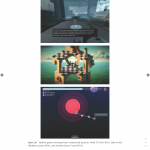 But where did independent games come from? Are they independent, just like cinema and music? I tell the history of independent video games from 1998-2018, and show the ongoing tensions around what indie games should be: Fun games? Games with political impact? Games representing diversity? Are indie games a movement for more democratic games, or do they speak only to a small audience of connoisseurs?
But where did independent games come from? Are they independent, just like cinema and music? I tell the history of independent video games from 1998-2018, and show the ongoing tensions around what indie games should be: Fun games? Games with political impact? Games representing diversity? Are indie games a movement for more democratic games, or do they speak only to a small audience of connoisseurs?
I describe all of this as a continued quest for authenticity – a quest to distance indie games from big publishers, from traditional game form, and from the lack of diversity in big-budget and casual games.
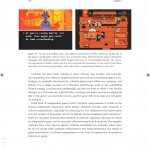 This is a trade book for a broad audience, but with theoretical underpinnings. It shows many strange new games in detail, it contains stories from my own participation in game jams and conferences, it is lavishly illustrated with more than 100 color pictures, and it features interviews with 21 developers and festival organizers (Jonathan Blow, Anna Anthropy, Bennett Foddy, Simon Carless, Nathalie Lawhead, and more).
This is a trade book for a broad audience, but with theoretical underpinnings. It shows many strange new games in detail, it contains stories from my own participation in game jams and conferences, it is lavishly illustrated with more than 100 color pictures, and it features interviews with 21 developers and festival organizers (Jonathan Blow, Anna Anthropy, Bennett Foddy, Simon Carless, Nathalie Lawhead, and more).
The book took a lot of work, but it was also fun to write, as it gave me the chance to play hundreds of fascinating games, and to connect with interesting people in the independent game community. I hope you will enjoy it too.
Upcoming talks
I will be presenting the book at the NYU Game Center on October 10th, and at IndieCade in Los Angeles on October 12th.
Get the book
Handmade Pixels is available from (preferably?) your local independent bookstore, MIT Press, or any number of online retailers.
Official MIT Press site: https://mitpress.mit.edu/books/handmade-pixels
My own book site, with the full developer interviews. https://www.jesperjuul.net/handmadepixels/
![]() I will be presenting my new book, Handmade Pixels, on October 10th 2019 at the New York University Game Center.
I will be presenting my new book, Handmade Pixels, on October 10th 2019 at the New York University Game Center.
“Join us to celebrate the launch of Jesper Juul’s latest publication, Handmade Pixels! Handmade Pixels: Independent Video games and the Quest for Authenticity is the new book (MIT Press) from video game researcher Jesper Juul, about the history and idea of independent video games.
Through examples of many interesting and strange games, and through audience participation, I will tell the history of independent games, and point to their ongoing challenges: What happens when players deny that an experimental independent game is a “real game”? Are experimental independent video games for everyone, or only for a small group of connoisseurs? Can we continue to make new video games by referring to older analog or digital visual styles? How can we create authenticity in a thoroughly digital world?”
Get your tickets here.